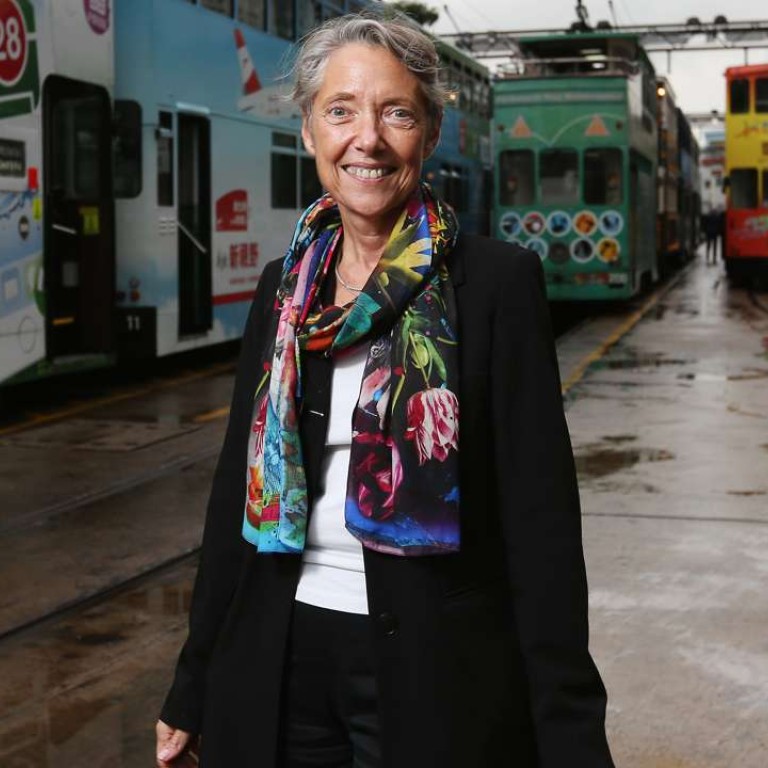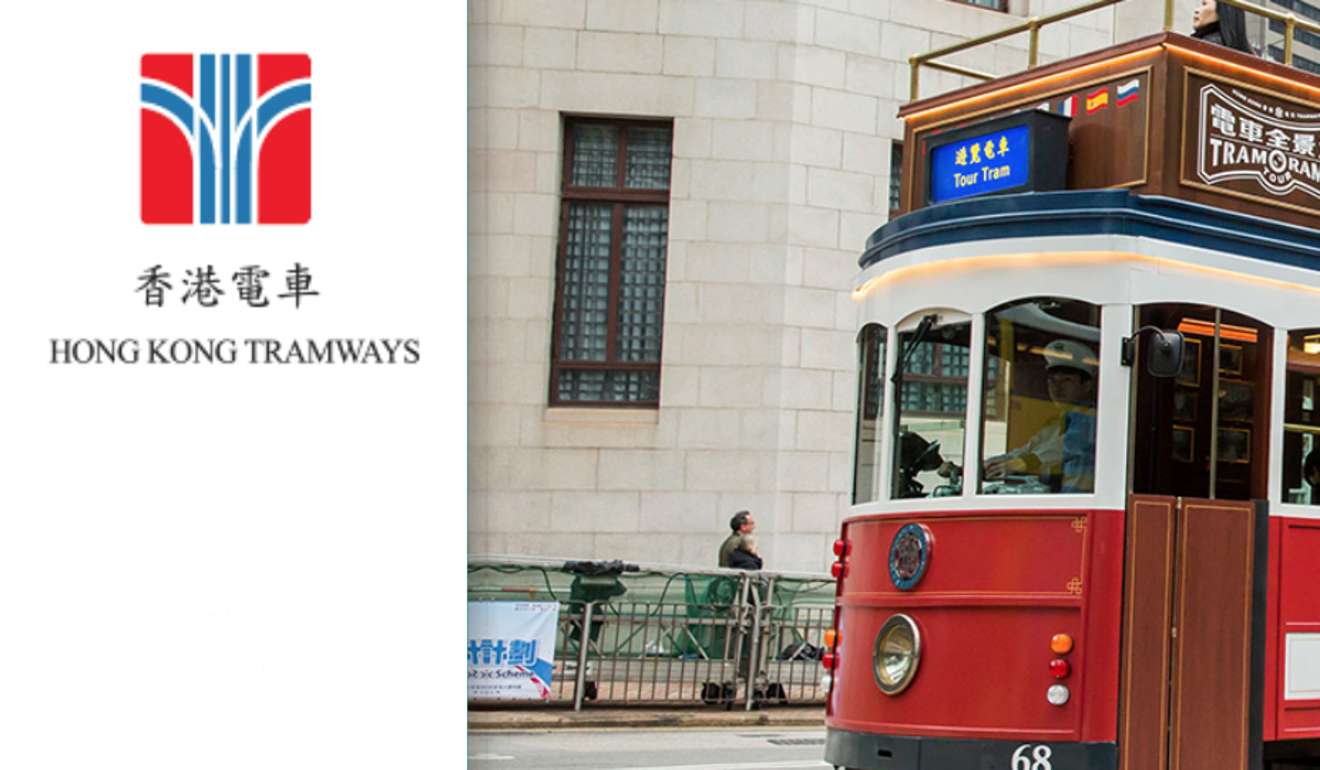
New look for Hong Kong’s trams as operator aims to widen its horizons
The company has redesigned the familiar logo and is hoping to use its expertise to establish modern tramways and driverless systems across Asia
Hong Kong’s iconic trams will be rebranded later this month as the operator looks to stay ahead of the game in an increasingly competitive environment and expand into mainland China and Asia.
The logo that has been in place for 43 years is being replaced to emphasise what the company calls the emotional link of the “ding dings”, as they are affectionately known, with the public.
In an exclusive interview with the Post, Elisabeth Borne, chief executive officer of parent company RATP Group, said it hoped to use the success story of Hong Kong’s trams as a springboard into the wider market.

RATP group is the world’s fifth largest public transport company and already runs various transport businesses worldwide, including the Nanjing Bus networks on the mainland, Seoul Metro Line 9 in South Korea and Mumbai Metro Line 1 in India.
Emmanuel Vivant, managing director of Hong Kong Tramways, said the new logo would be introduced at the end of April to rejuvenate the image of the streetcars, the oldest form of public transport in the city with a history stretching back 110 years.
The current logo, showing blue and white-striped tram tracks against a red background, was introduced by the former owner, property developer Wharf Holdings, when it bought the company in 1974.
French transport giant RATP acquired ownership in 2010 in a deal that stunned many die-hard tram fans in the city.
“Hong Kong Tramways is currently rethinking its visual identity to emphasise the emotional link with the Hong Kong public and fully reflect its iconic value,” Vivant told the Post.
“We believe that the trams do not only belong to Hong Kong Tramways, they belong to Hong Kong and to every Hong Kong citizen, and this is what we want to express.”
Apart from the image makeover, Vivant said they sought to continuously improve the service as the city’s public transport industry was highly competitive.
“Hongkongers love trams. We have a big responsibility to preserve the heritage of trams. The fares are very cheap but we don’t receive any subsidies from the government while people can use other means of public transport.
“Therefore we need to keep our competitive edge and improve the quality of our service,” he said, adding that they would continue to roll out more signature trams and cooler trams fitted with air-conditioning systems.

“Hong Kong trams are a part of the city’s heritage. We are proud to operate these iconic trams,” she said. “We are reasonably profitable and we are happy with the performance. But we need to remain cautious because we are in a very competitive environment.”
Hong Kong Tramways would also continue to push its proposal to build a cable-less tram system at the Kai Tai development area in East Kowloon and rural areas in the New Territories, such as Hung Shui Kiu.
It currently runs 163 tramcars – the world’s largest double-decker fleet – and carries around 200,000 passengers a day.
“Trams are the future! If you remove trams in Hong Kong, you remove the heart of Hong Kong,” Vivant said.

